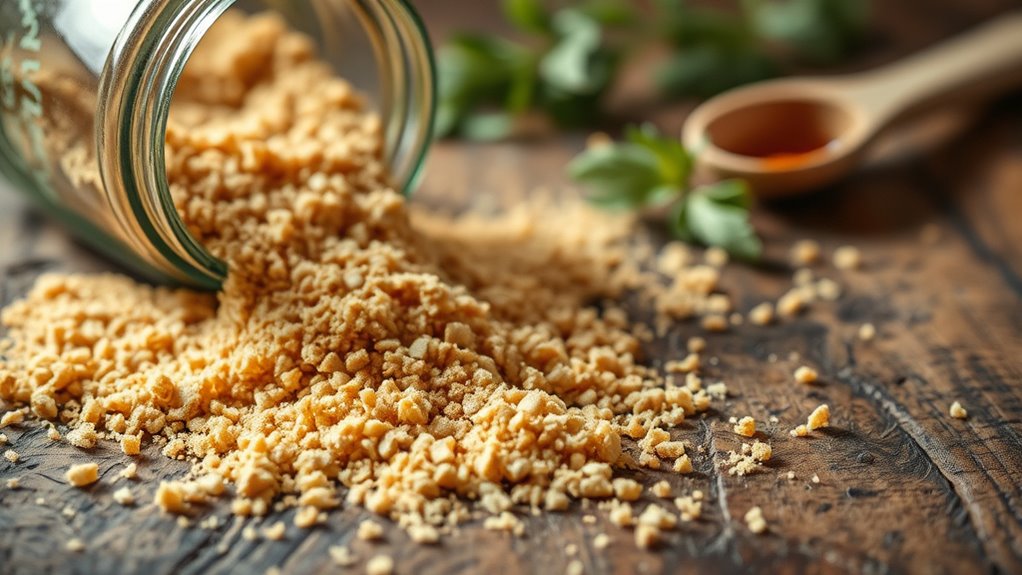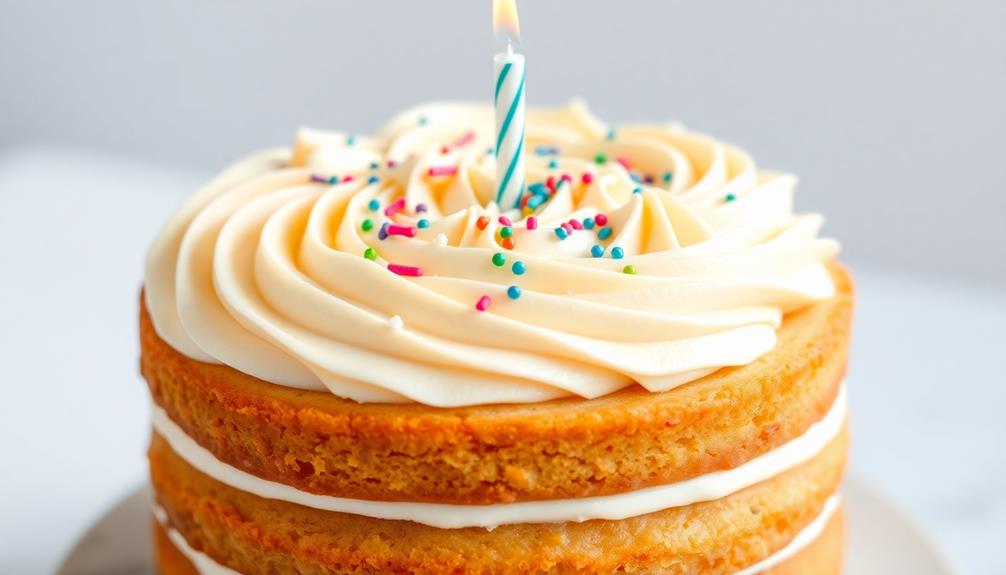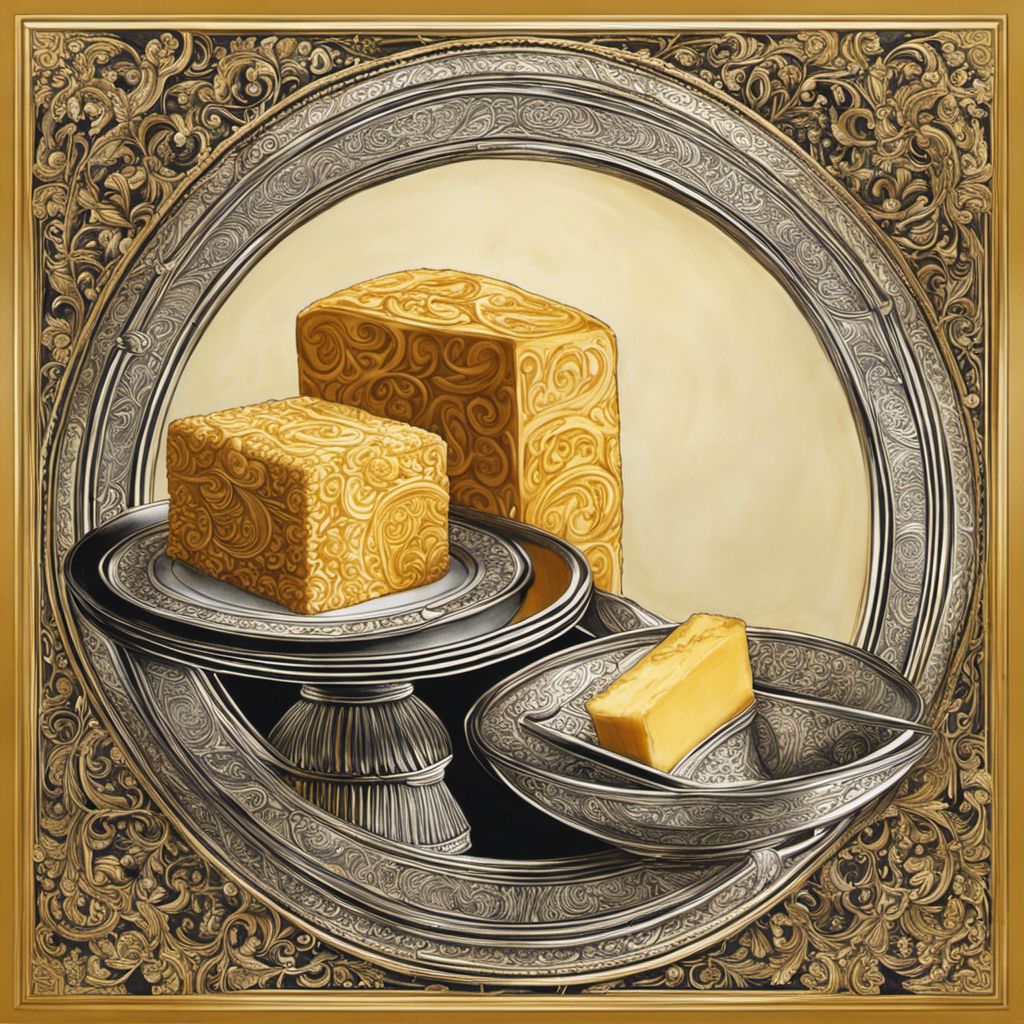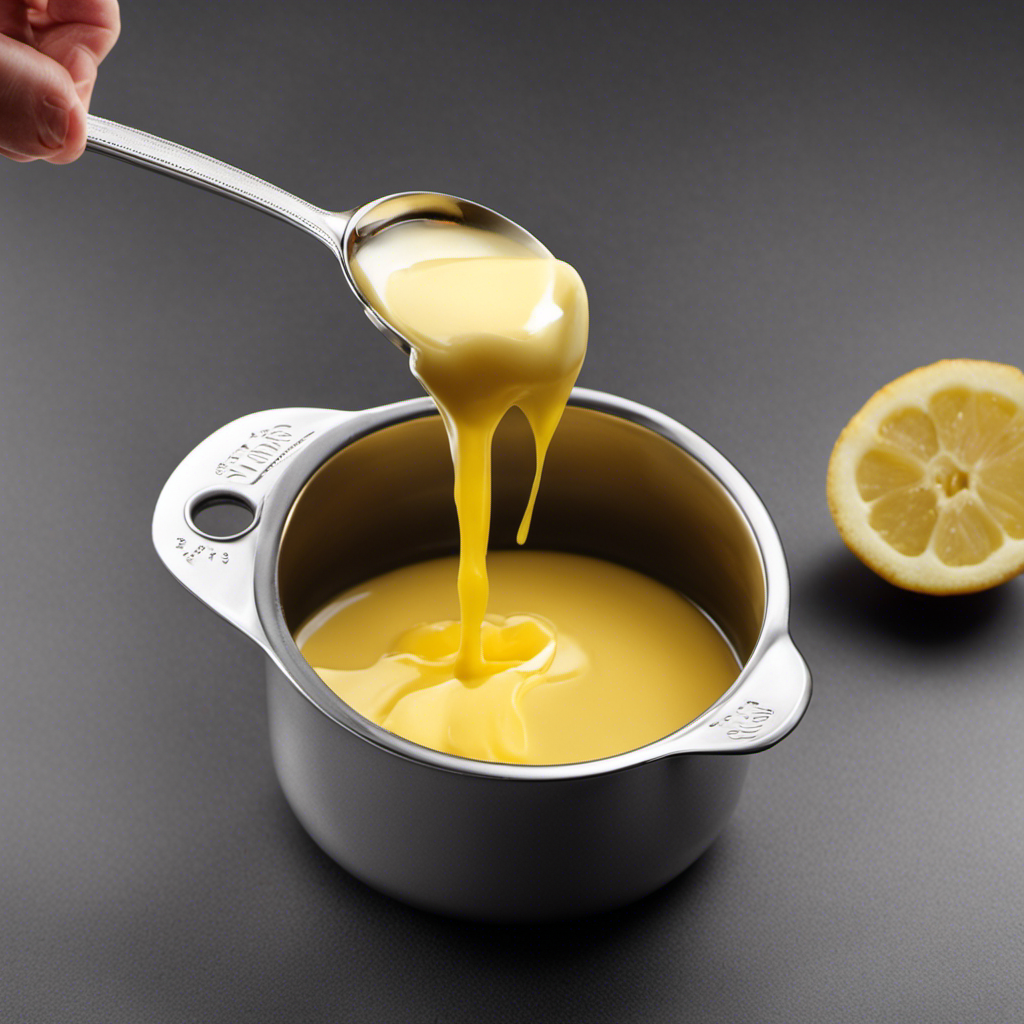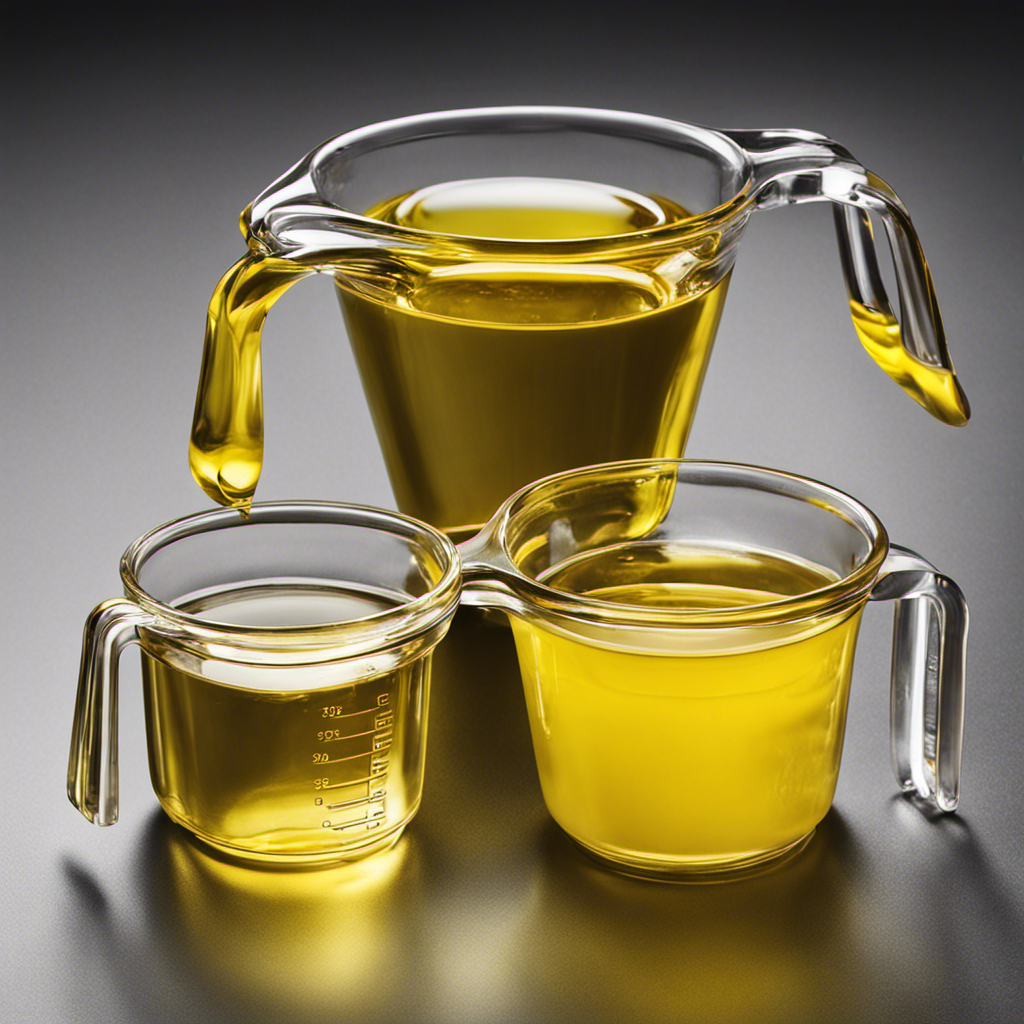To make DIY brown butter powder, start with high-quality unsalted butter and let it reach room temperature. Cook it over medium heat until it turns golden brown with a toasted aroma, then cool. Spread the browned butter thinly on parchment, dehydrate at low heat until crispy, and grind into a fine powder. Store in an airtight container in a cool, dark place. Keep exploring for more tips to perfect your homemade flavor enhancer.
Key Takeaways
- Use high-quality, unsalted butter and let it reach room temperature before browning for optimal flavor development.
- Cook butter over medium heat until it turns deep amber with a toasted aroma, then cool completely.
- Spread cooled brown butter evenly on parchment or dehydrator trays and dehydrate at low temperature (~130°F) until fully dry.
- Grind the dried brown butter into a fine powder using a spice grinder or high-powered blender.
- Store the powder in an airtight container in a cool, dark place to preserve its umami flavor for instant use.
Selecting the Right Butter and Preparing It
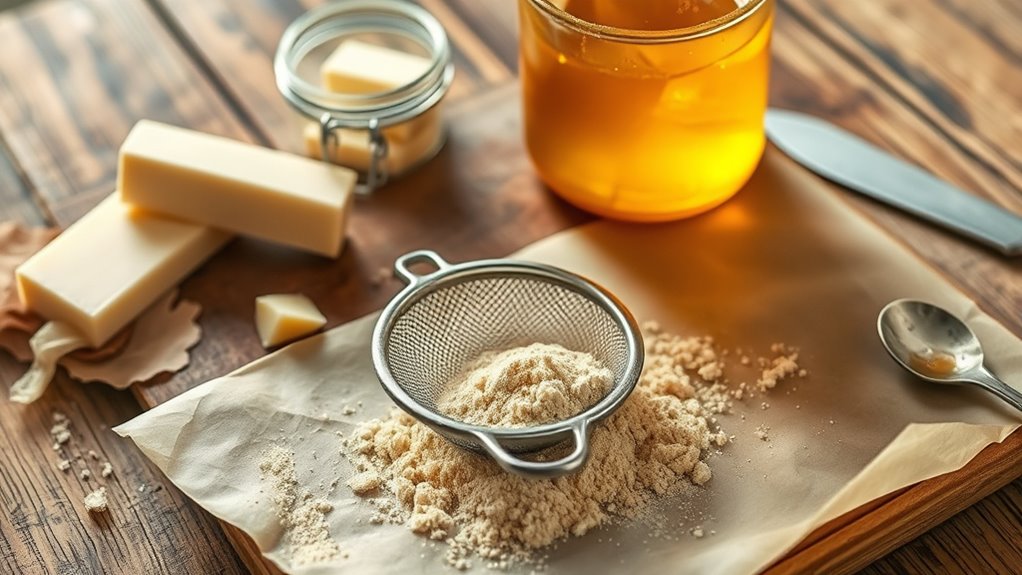
Choosing the right butter is essential for making flavorful brown butter powder. Start with high-quality butter, as butter quality directly impacts the flavor enhancement of your final product. Look for unsalted butter to control salt levels and ensure a pure, rich taste. Fresh, creamy butter with a good fat content produces a deeper, more nutty flavor when browned. Avoid butter with additives or preservatives, as these can interfere with the browning process and alter the flavor. Before cooking, let the butter come to room temperature to promote even melting. Proper preparation guarantees consistent browning and maximizes the butter’s natural flavors. Additionally, understanding the importance of knowledge and learning can help you refine your cooking techniques and achieve better results. By selecting the best butter, you set the foundation for a delicious, aromatic brown butter powder that elevates your dishes.
Cooking and Browning the Butter to Perfection
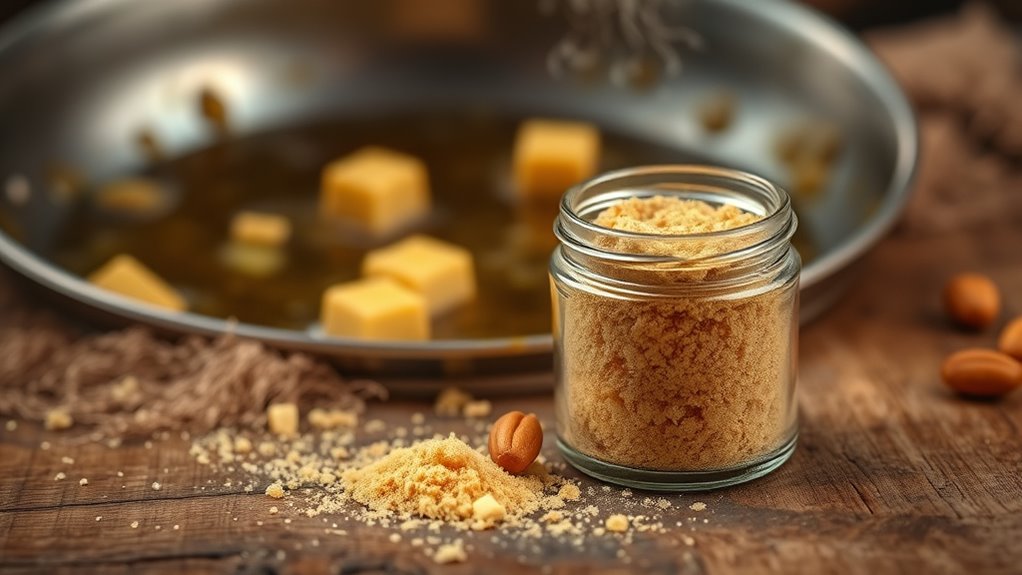
To achieve perfect brown butter, you need to carefully cook it over medium heat, paying close attention to its changing color and aroma. As the butter melts, it begins to foam, signaling the start of the caramelization process. You’ll notice a nutty aroma developing as the milk solids toast, intensifying the butter flavor. Stir occasionally to guarantee even heat distribution and prevent burning. The butter will turn a golden brown, and small brown flecks may form at the bottom of the pan. This is a sign that the caramelization process is nearing completion. Once you see a deep amber hue and smell a rich, toasted aroma, remove the pan from heat immediately. This step is vital to achieve that perfect, complex flavor characteristic of well-browned butter. Monitoring the color change closely helps ensure you don’t overcook the butter and lose the desired flavor profile.
Dehydrating the Brown Butter for Powdering
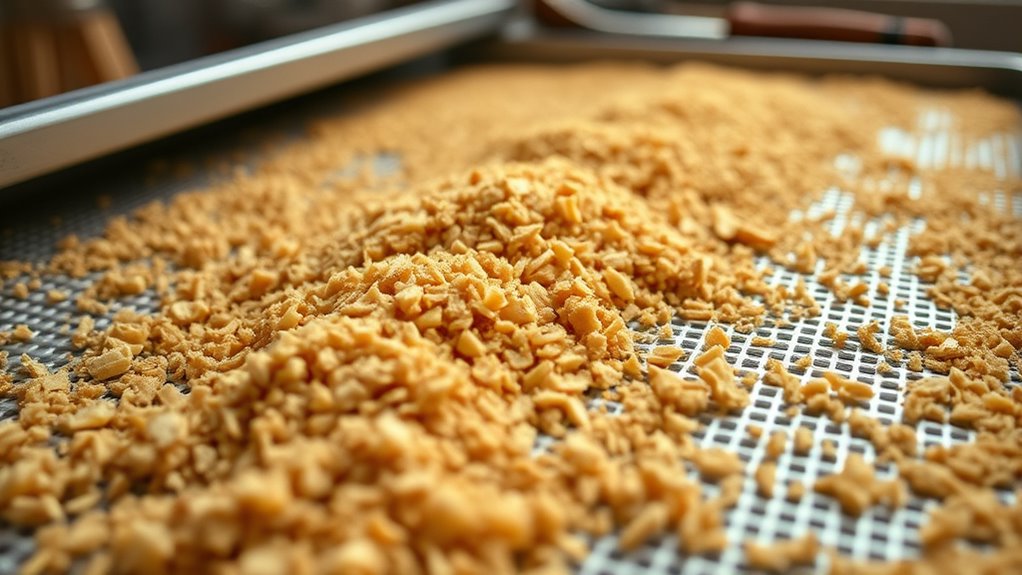
Once your brown butter reaches that rich, toasted aroma and deep amber color, remove it from heat and let it cool slightly. To dehydrate it for powdering, spread the butter evenly on a parchment-lined baking sheet or dehydrator tray. Use a low temperature setting, around 130°F (54°C), to preserve flavor enhancement and prevent burning. Dehydrating slowly ensures moisture is removed thoroughly, creating a dry, crumbly texture ideal for grinding. Patience is key, as this process can take several hours. As the moisture evaporates, the butter becomes more shelf stable, extending its usability without preservatives. Keep a close eye to avoid over-drying, which can affect flavor. Proper dehydration not only preserves the rich umami flavor but also maintains the low-carb integrity of the butter. Once fully dried, the butter is ready for the next step: grinding into a fine powder.
Grinding and Storing Your Brown Butter Powder

After your brown butter has fully dried and cooled, it’s time to grind it into a fine powder. Use a spice grinder or a high-powered blender to achieve a consistent texture. The goal is to preserve the rich butter flavor while creating a smooth powder that easily dissolves into dishes. Once ground, transfer the powder to an airtight container to maintain freshness and prevent moisture absorption. For ideal storage methods, keep it in a cool, dark place away from heat and light, which can degrade the flavor. Proper storage ensures your brown butter powder retains its umami and buttery notes longer, making it convenient for quick flavor boosts in various recipes. When handling your powder, be mindful of storage techniques to maximize shelf life and flavor quality. Always label your container for easy identification and freshness tracking.
Creative Ways to Incorporate Brown Butter Powder Into Dishes
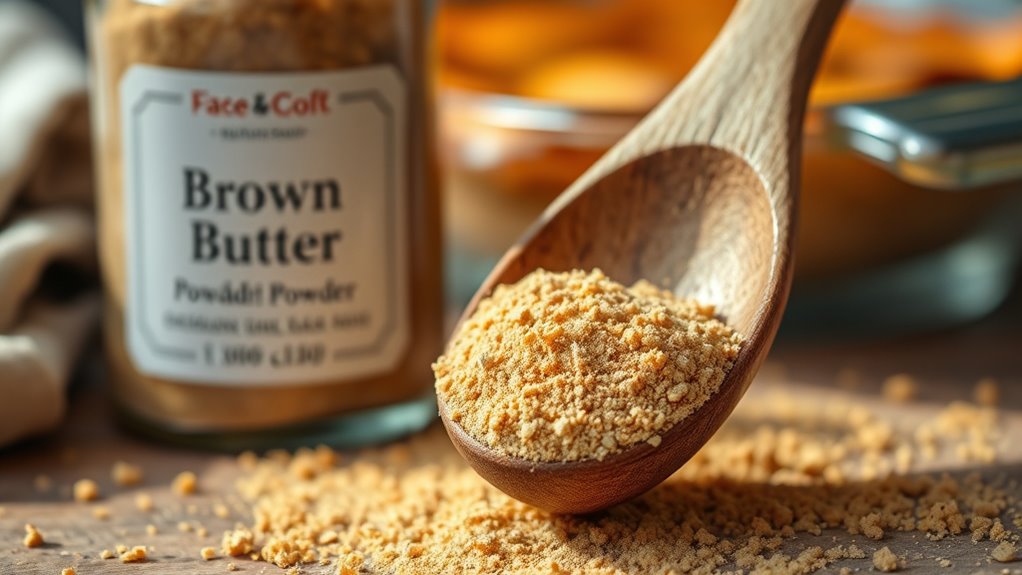
Brown butter powder adds rich, nutty flavor to a variety of dishes, making it a versatile ingredient in your culinary toolkit. You can use it as a butter flavoring in popcorn, roasted vegetables, or mashed potatoes to enhance depth and complexity. Sprinkle it over pasta or risotto for a subtle, savory boost, or incorporate it into bread and muffin batter for added richness. It’s also excellent for seasoning meats or seafood before cooking, lending a toasted, buttery aroma. In baking, brown butter powder can replace or supplement butter, providing flavor without extra moisture. Its culinary applications extend to salad dressings, dips, and even spice rubs, making it a handy ingredient for elevating everyday dishes with a warm, buttery undertone. Additionally, understanding different types of beach destinations can inspire new ways to enjoy coastal flavors and fresh seafood.
Frequently Asked Questions
Can I Use Plant-Based Butter Instead of Dairy Butter?
You can definitely use plant-based alternatives instead of dairy butter. For a vegan substitution, choose a high-quality vegan butter or margarine that melts well. Keep in mind, the flavor and color might differ slightly from dairy, but you’ll still achieve a delicious, umami-rich result. Just make sure you process it carefully to create a similar brown butter powder, and you’ll have an effective plant-based option for enhancing your dishes.
How Long Does Homemade Brown Butter Powder Stay Fresh?
Imagine revealing a secret ingredient—your homemade brown butter powder stays fresh longer than you might think. Its shelf life usually spans 1 to 2 months when stored properly. Keep it in an airtight container in a cool, dark place, away from moisture and heat. For best results, follow storage tips like avoiding exposure to air and light, ensuring your umami boost remains vibrant and flavorful for as long as possible.
Is There a Substitute for Dehydration if I Lack a Dehydrator?
If you lack a dehydrator, don’t worry—there are dehydration alternatives for moisture removal techniques. You can use your oven on its lowest setting, leaving the door slightly ajar to allow moisture to escape. Alternatively, air drying in a warm, dry place works for small batches. Just make certain you stir frequently for even drying, and keep an eye on your product to prevent over-drying or burning.
What Flavor Variations Can I Add to the Brown Butter Powder?
Thinking about flavor variations is like painting a blank canvas—your options are endless. You can add savory spice blends like smoked paprika, garlic powder, or onion powder to deepen the umami. Herbal infusions such as thyme, rosemary, or basil can add fresh, aromatic notes. Mix in a pinch of nutritional yeast for cheesy richness. Experimenting helps you craft a personalized brown butter powder that perfectly complements your dishes.
Can I Use This Powder in Sweet Recipes?
You can definitely use brown butter powder in sweet recipes and dessert applications. Its rich, nutty flavor adds depth and complexity to baked goods, frosting, or even ice creams. Just be mindful of the salt content and adjust your sweeteners accordingly. Incorporate it gradually to enhance flavors without overpowering sweetness, and experiment with small batches first to find the perfect balance for your desserts.
Conclusion
Now that you’ve mastered making brown butter powder, you can elevate any dish with a rich umami boost. Remember, practice makes perfect, so don’t be discouraged if it takes a few tries. Once you get the hang of it, this homemade powder will become your secret ingredient for adding depth and flavor. As the saying goes, “A little goes a long way,” so enjoy experimenting and savor the delicious results!
